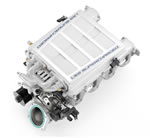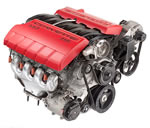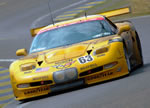Ruthless Pursuit of Power: The Mystique of the C6 Corvette LS7 Engine - Page 2 of 26
Ruthless Pursuit of Power: Lucky Seven Edition: The Mystique of the 7-Liter, 7000-RPM, LS7 - Page 2 of 26
 |
 |
by Hib Halverson
© May 2013— Updated: November 2014
No use without permission, All Rights Reserved
The Milestone LS7
Regulars at the Corvette Action Center know I'm sort of an "engine wonk". The last several years--if you couldn't already tell--I've been smitten with the LS7 in the Z06 and the 2013 427 Convertible. I think that big, thumping 427 represents a high water mark for Corvette engines.
C6 ZR1 and C7 Z06 owners probably wanna slap me silly for saying that, but, the fact remains: LS9 and LT4, for all their technology, still need superchargers to make their 600+ horses. Without boost, it wouldn't get much beyond the LS3's 436 or the LT1's 460.
The 427 is an amazing piece of work: fat torque curve, 505-hp SAE at 6300-RPM, 7100 rev limit and all without forcing a gas guzzler tax hit. There's really cool stuff in that engine--titanium rods and intake valves, 11.0:1 compression, CNC-machined heads and a 7000-RPM valvetrain. The LS7's power density (power/weight) is 1.11. Even ten years after the engine debuted, that remains a high mark for a normally-aspirated, production V8 made in the Western Hemisphere. Such performance gives that unboosted, stump-pulling, high-revving V8 a mystique which the supercharged 6.2 lacks. So--while I appreciate the LS9, to me; LS7's case for being the stuff of legends is more compelling.
GM Powertrain Division (GMPT) likely objects to my "high water mark" statement citing the specs of the direct-injected, 450-hp, 6.2L V8 which will power the 2014 Corvette Stingray. No doubt, the "LT1", the first example of the Fifth-Generation Small-Block V8, is an outstanding technology showcase, but the fact remains: there will never be another 7100-RPM, seven-liter engine in a Corvette. For purists, i.e.: those wanting high-RPM, normally aspirated V8s, it's all downhill from here, on the way to higher CAFE numbers and that ecological nirvana which is reduced carbon dioxide emissions. Going forward, the most powerful Corvette engines will be supercharged.
So GM Communications won't boot my name any lower on its black list than it already is, let me add that, as car companies move toward smaller, less powerful engines, GM may has a few big bore N.A. V8s left before we go off the V6-turbo-deep-end, such as the LT1 which debuted in the Stingray in the Fall of 2013. It has a specific output (power displacement) of 1.22, smidgen higher than the LS7's 1.18. A good part of that extra two and a half percent specific output comes from gasoline direct injection (GDI) and the increase in compression ratio it allows.
That Powertrain was able to pull off 450-hp from 6.2 liters while meeting ever-tightening emissions standards and likely getting a bump in fuel economy over the LS3--no doubt from variable valve timing and cylinder deactivation--will have other manufacturers continuing to hide their envy and denigrate pushrod V8s as brutally crude and hopelessly oldskool.
Set the Wayback Machine for 1969
Some say, "History repeats itself." The LS7 channeled a legendary engine of the past, the ZL1, all-aluminum, 427 developed for the 1969 Corvette. Both were all-aluminum, big-bore, pushrod V8s, influenced by Chevrolet's efforts in motorsports. The ZL1 was a race engine detuned and configured for street use. Some might say the LS7 is similar: C5-R race engine technology adapted to a production application with compromises for drivability, emissions compliance and fuel economy.
When it comes to Chevy aluminum 427s, how far has technology marched? A ZL1 made about 560-horses at 6800-RPM. When tested with 1960s dynamometer procedures, the LS7 produces about 550-hp@6300 RPM, but has a fatter torque curve, weighs less, has far lower exhaust emissions and gets much better gas mileage. Further, it has better reliability/durability, requires less maintenance and is a lot nicer to drive. In today's money, a ZL1 cost about thirty large. You can buy an LS7 for a little over half that. The old ZL1 was installed in two Vettes, 69 Camaros and, later, sold over the counter, with somewhere between 90 and 300 produced. To date, around 35,000 LS7s have been hand-built at GM's old, Wixom, Michigan, Performance Build Center (PBC) and the new PBC at Bowling Green, KY. Seems we've come far in nearly half-a-century.
LS7 History Book
Ok--reset the Wayback to the early-'00s. In the American LeMans Series and at the 24 Hours of Le Mans, Corvette Racing had been eating everyone's lunch. Its all-conquering C5-Rs were powered by Katech-built, 427s. Based on production, Gen 3 V8 architecture, they used a special cylinder block with larger-than-stock bore and stroke, racing valve gear, different cylinder heads, a motorsports-specific EFI and an intake restrictor. Katech's C5-R 427s made about 600 horses at 6200-RPM.
 |
 |







